
How to Use ESP32: Examples, Pinouts, and Specs
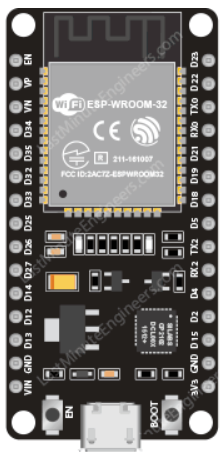
 Design with ESP32 in Cirkit Designer
Design with ESP32 in Cirkit DesignerIntroduction
The ESP32 is a powerful, low-cost microcontroller developed by Espressif Systems. It features integrated Wi-Fi and Bluetooth capabilities, making it an excellent choice for Internet of Things (IoT) applications, smart devices, and embedded systems. With its dual-core processor, low power consumption, and extensive peripheral support, the ESP32 is widely used in projects ranging from home automation to industrial control systems.
Explore Projects Built with ESP32
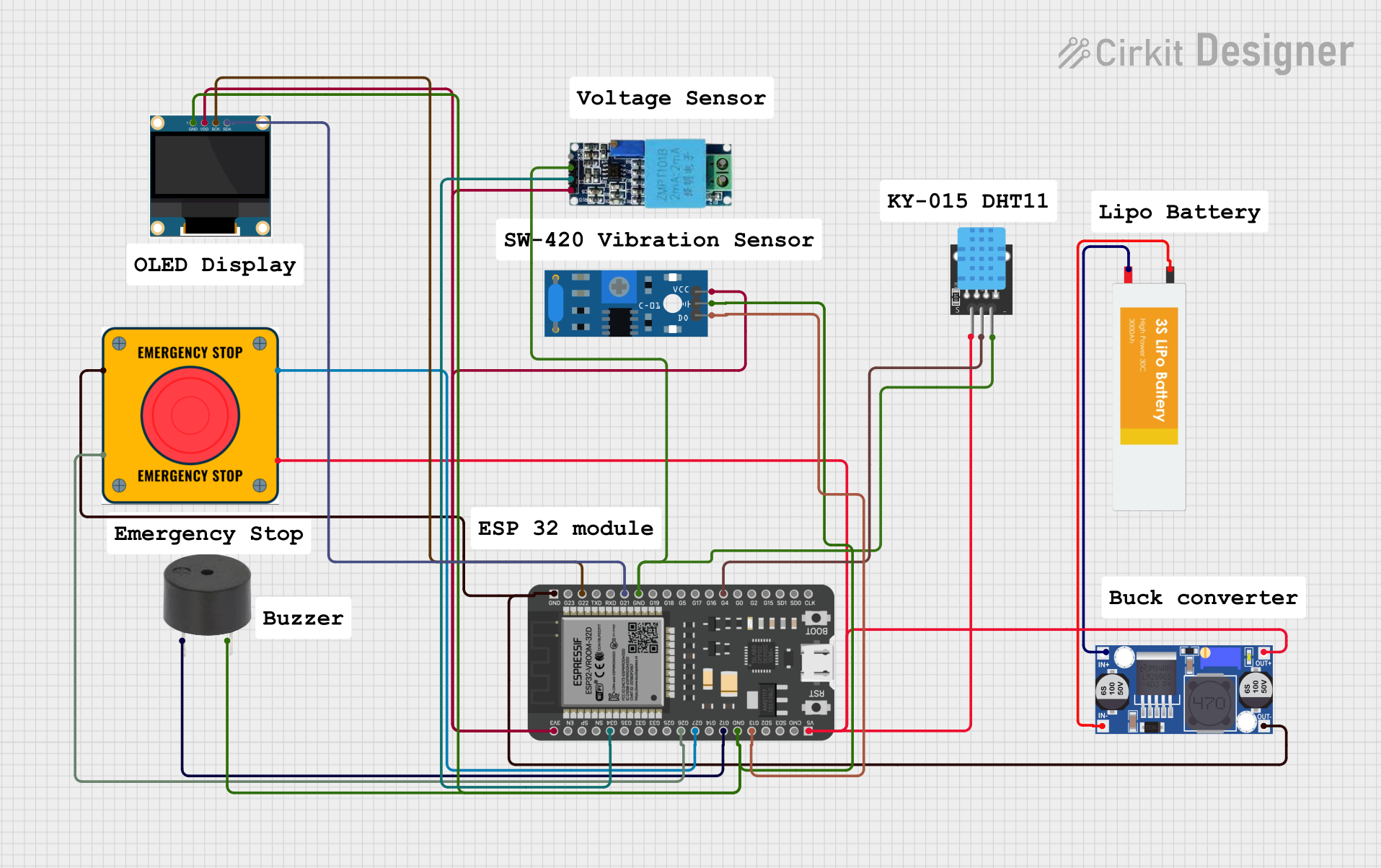
 Open Project in Cirkit Designer
Open Project in Cirkit Designer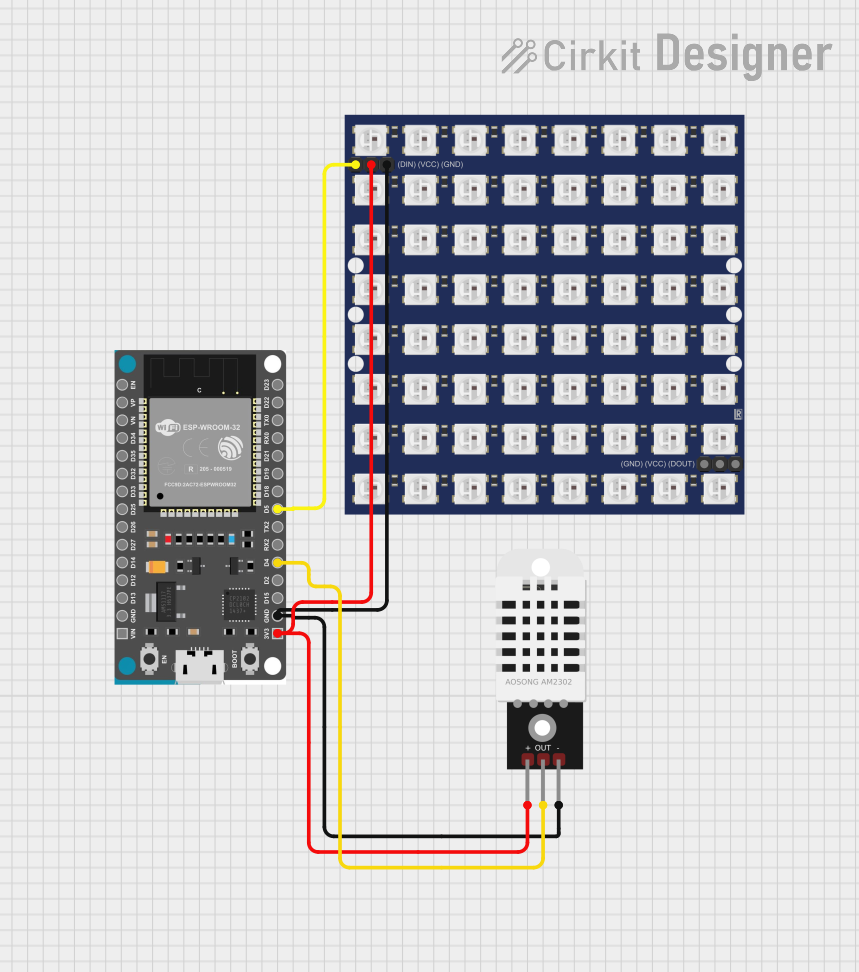
 Open Project in Cirkit Designer
Open Project in Cirkit Designer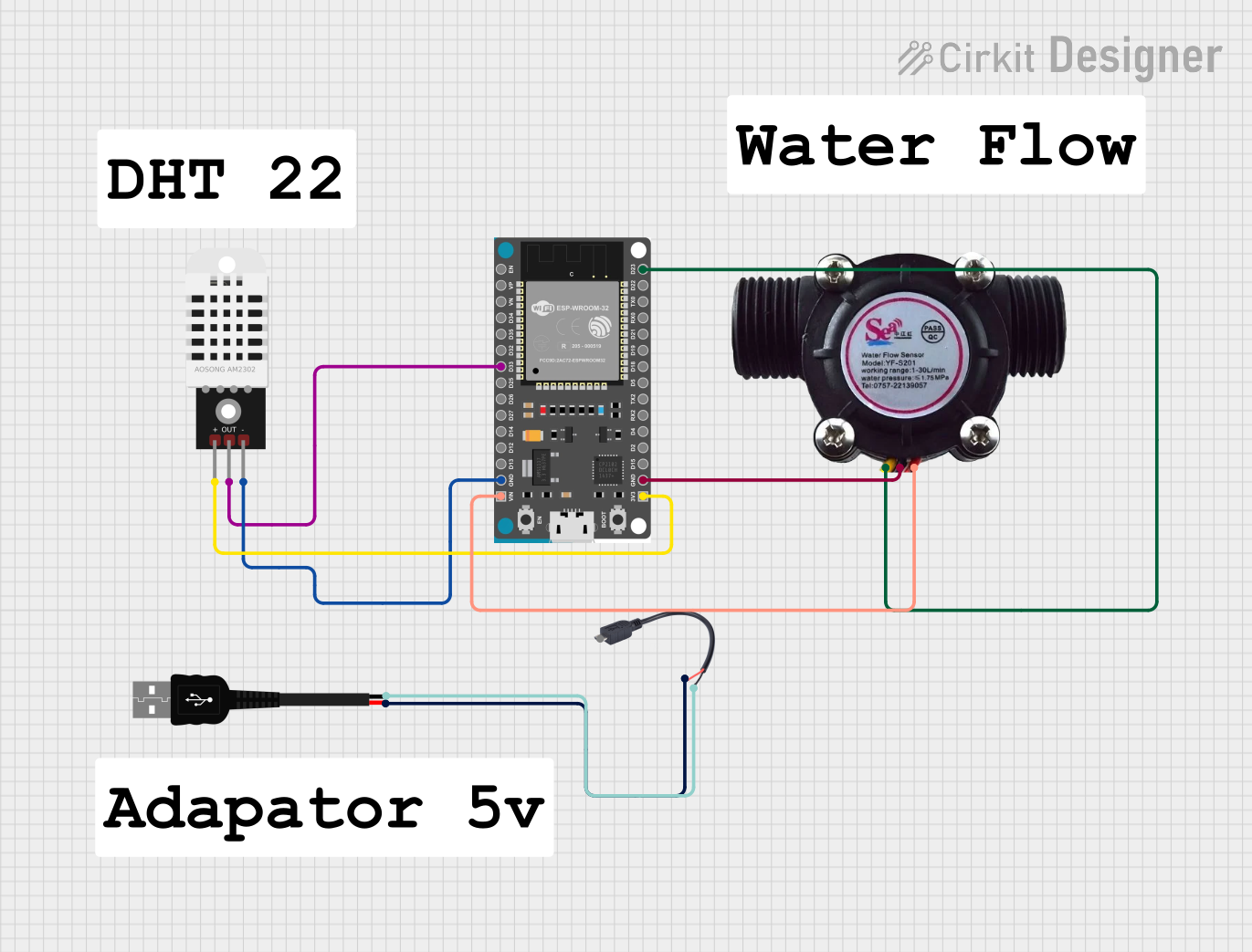
 Open Project in Cirkit Designer
Open Project in Cirkit Designer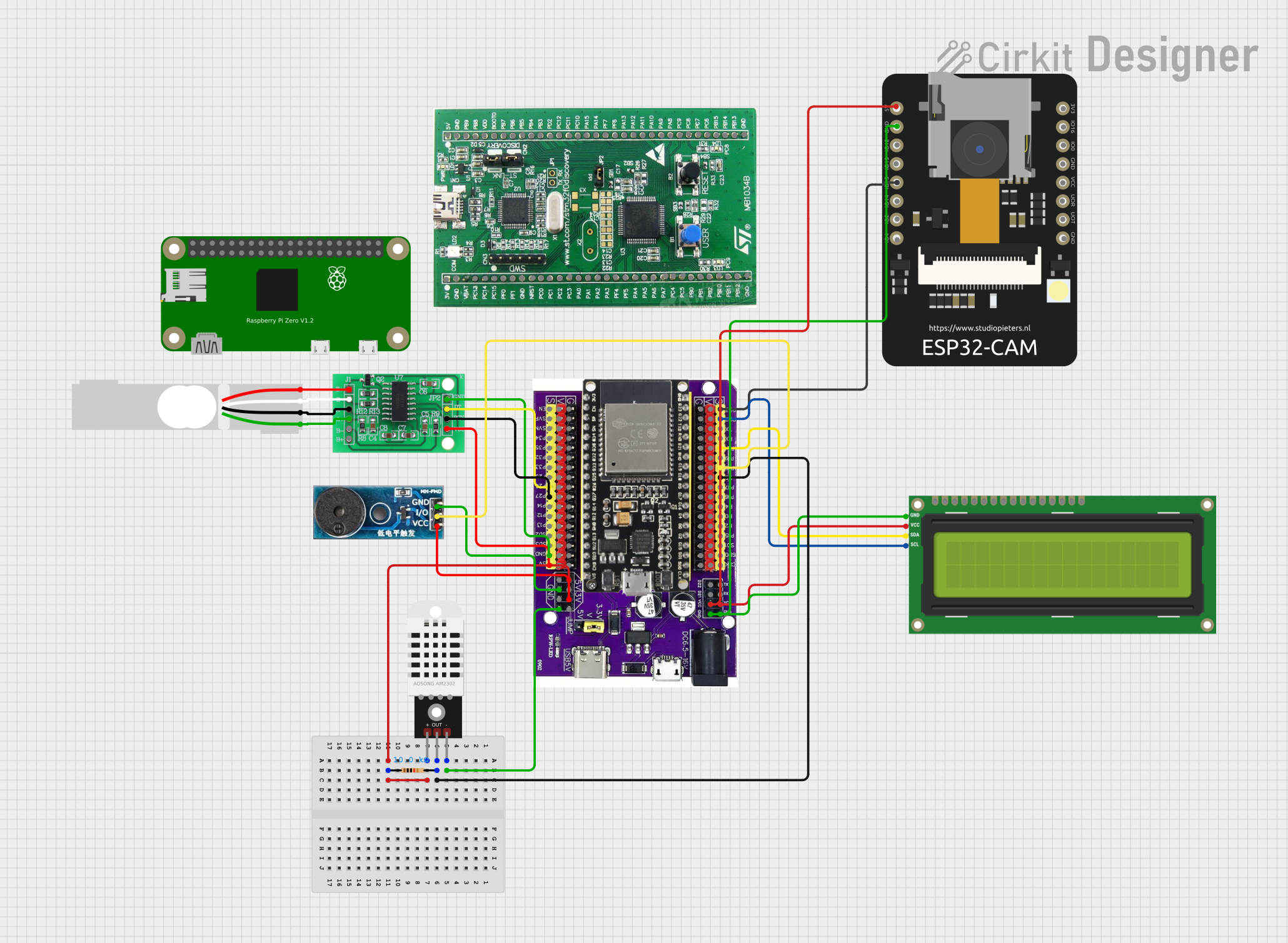
 Open Project in Cirkit Designer
Open Project in Cirkit DesignerExplore Projects Built with ESP32

 Open Project in Cirkit Designer
Open Project in Cirkit Designer
 Open Project in Cirkit Designer
Open Project in Cirkit Designer
 Open Project in Cirkit Designer
Open Project in Cirkit Designer
 Open Project in Cirkit Designer
Open Project in Cirkit DesignerCommon Applications and Use Cases
- IoT devices and smart home systems
- Wireless sensor networks
- Wearable electronics
- Robotics and automation
- Data logging and remote monitoring
- Bluetooth-enabled devices
Technical Specifications
The ESP32 is packed with features that make it versatile and powerful. Below are its key technical specifications:
General Specifications
- Processor: Dual-core Xtensa® 32-bit LX6 microprocessor
- Clock Speed: Up to 240 MHz
- RAM: 520 KB SRAM
- Flash Memory: Typically 4 MB (varies by module)
- Wi-Fi: 802.11 b/g/n (2.4 GHz)
- Bluetooth: v4.2 BR/EDR and BLE
- Operating Voltage: 3.0V to 3.6V
- GPIO Pins: 34 (multiplexed with other functions)
- ADC Channels: 18 (12-bit resolution)
- DAC Channels: 2 (8-bit resolution)
- PWM Channels: 16
- I2C Interfaces: 2
- SPI Interfaces: 4
- UART Interfaces: 3
- Power Modes: Active, Light Sleep, Deep Sleep, Hibernation
Pin Configuration and Descriptions
The ESP32 has a variety of pins for different functionalities. Below is a table summarizing the key pins:
| Pin Name | Function | Description |
|---|---|---|
| GPIO0 | General Purpose I/O, Boot | Used for boot mode selection during startup. |
| GPIO2 | General Purpose I/O, ADC | Can be used as an ADC input or general-purpose pin. |
| GPIO12 | General Purpose I/O, ADC, DAC | Supports ADC and DAC functionality. |
| GPIO13 | General Purpose I/O, PWM | Can be used for PWM output or general-purpose I/O. |
| GPIO15 | General Purpose I/O, ADC | Supports ADC functionality. |
| EN | Enable | Resets the chip when pulled low. |
| 3V3 | Power Supply | Provides 3.3V power to the ESP32. |
| GND | Ground | Ground connection. |
| TX0 | UART Transmit | Transmit pin for UART0. |
| RX0 | UART Receive | Receive pin for UART0. |
Note: The ESP32 pinout may vary slightly depending on the specific module or development board (e.g., ESP32-WROOM-32, ESP32-WROVER).
Usage Instructions
How to Use the ESP32 in a Circuit
Powering the ESP32:
- Connect the 3V3 pin to a 3.3V power source.
- Ensure the GND pin is connected to the ground of your circuit.
- Avoid exceeding the maximum voltage of 3.6V to prevent damage.
Programming the ESP32:
- Use a USB-to-serial adapter or a development board with a built-in USB interface.
- Install the ESP32 board package in the Arduino IDE or use the Espressif IDF (IoT Development Framework) for advanced programming.
Connecting Peripherals:
- Use GPIO pins for digital input/output.
- Connect sensors to ADC pins for analog input.
- Use I2C, SPI, or UART interfaces for communication with other devices.
Important Considerations and Best Practices
- Power Supply: Use a stable 3.3V power source with sufficient current (at least 500 mA).
- Boot Mode: Ensure GPIO0 is pulled low during boot to enter programming mode.
- Pull-up/Pull-down Resistors: Use appropriate resistors on GPIO pins to avoid floating states.
- Wi-Fi Interference: Place the ESP32 away from metal objects or other RF sources to ensure reliable Wi-Fi performance.
Example Code for Arduino UNO Integration
Below is an example of how to use the ESP32 with the Arduino IDE to blink an LED connected to GPIO2:
// Example: Blink an LED using ESP32
// Connect an LED to GPIO2 with a 220-ohm resistor in series.
#define LED_PIN 2 // GPIO2 is used for the LED
void setup() {
pinMode(LED_PIN, OUTPUT); // Set GPIO2 as an output pin
}
void loop() {
digitalWrite(LED_PIN, HIGH); // Turn the LED on
delay(1000); // Wait for 1 second
digitalWrite(LED_PIN, LOW); // Turn the LED off
delay(1000); // Wait for 1 second
}
Tip: Ensure the ESP32 is properly connected to your computer and the correct board and port are selected in the Arduino IDE.
Troubleshooting and FAQs
Common Issues and Solutions
ESP32 Not Detected by Computer:
- Ensure the USB cable is functional and supports data transfer.
- Install the correct USB-to-serial driver (e.g., CP210x or CH340).
Failed to Upload Code:
- Check that GPIO0 is pulled low during boot.
- Verify the correct COM port and board are selected in the Arduino IDE.
- Press the "EN" (reset) button on the ESP32 board before uploading.
Wi-Fi Connection Issues:
- Ensure the Wi-Fi credentials (SSID and password) are correct.
- Check for interference from other devices or weak signal strength.
Random Resets or Instability:
- Use a stable power supply with sufficient current.
- Avoid using GPIO pins that are reserved for specific functions (e.g., GPIO6–11 for flash memory).
FAQs
Q: Can the ESP32 operate on 5V?
A: No, the ESP32 operates at 3.3V. Applying 5V to its GPIO pins can damage the chip. Use level shifters if interfacing with 5V devices.
Q: How do I put the ESP32 into deep sleep mode?
A: Use the esp_deep_sleep_start() function in your code. Connect a wake-up source (e.g., GPIO or timer) to wake the ESP32 from deep sleep.
Q: Can I use the ESP32 with Bluetooth and Wi-Fi simultaneously?
A: Yes, the ESP32 supports simultaneous use of Bluetooth and Wi-Fi, but performance may vary depending on the workload.
Q: What is the maximum range of the ESP32's Wi-Fi?
A: The range depends on environmental factors but typically extends up to 100 meters in open space.
By following this documentation, you can effectively use the ESP32 in your projects and troubleshoot common issues.